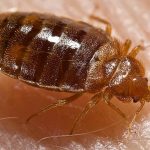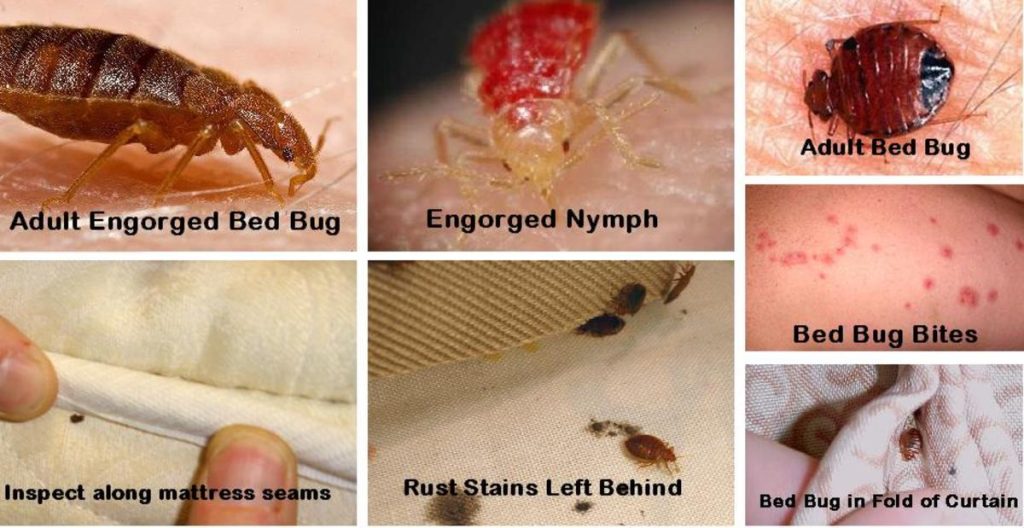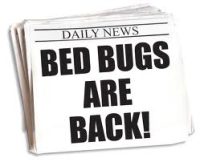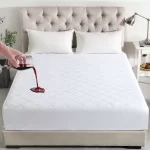
The common bedbug scientifically known as Cimex lectularius is a small wingless oval shaped bug (about the size of an apple seed), about a 1/4” long, oval, flat, 6 legs, and range in colour from almost white to brown and looks a bit like a beetle that exclusively feeds on blood of warm-blooded animals, particularly humans. Bed bugs are becoming a common problem worldwide, due to the increasing number of people travelling. As the bed bug is a wingless insect, they are transported from place to place, country to country, in suitcases, on clothes, in shoes, almost any place their tiny flat bodies can hide. The bed bug gets its name because they like to hide in bedding and mattresses.
Bed bugs are becoming a common problem around the world. They have been found in homes, hotels, backpackers, businesses, and many other places. Many people associate bed bugs with unsanitary conditions, as often is the case with pests such as cockroaches and rodents. However, bed bug infestations can occur to anyone, any time.
How do bed bugs breed?
The bed bug lays eggs called Nymphs; a female can lay 5-7 eggs per week, laying up to 500 in a lifetime.
Their eggs are a white sticky cocoon shape structure and can take between 3-10 days to hatch depending on the temperature. They become adults in 5 weeks and go through 5 molts to reach adult size—meaning they shed their old skin 5 times. They must feed before each molt.
The Female bed bug normally laid their eggs in secluded areas; they can feed and breed all year round when they have favourable conditions. When the female bed bug feed regularly, they can deposit 1, 2 or more eggs per day. The eggs are tiny, whitish, and difficult to see on most surfaces without magnification (individual eggs are about the size of a pinhead).
They will lay the majority of their eggs when the temperature is above 70°F (21°C). And will stop laying when temps drop to 50°F (10°C). When first laid, the eggs are sticky, causing them to adhere to surfaces. Newly hatched nymphs (baby bed bugs) are a pale tan coloured and about the size of a pinhead. Eggs can hatch in about 5-10 days in warm temps and at lower temperatures; hatching may take as long as 28 days. Newly hatched bugs feed at the first opportunity. As the nymphs grow they molt and shed their skin, up to five times before reaching maturity. Most nymphs usually develop into adults within 2 to 6 weeks. Adult bed bugs can live up to a year without a feed of blood.
How do bed bugs feed?
As bed bugs are attracted to carbon dioxide, which we exhale while we are asleep, the bed bug is generally most active and likes to get their feed of blood just before dawn. They insert their piercing and sucking mouth parts. The bedbug pierces your skin with two hollow tubes. With one tube it injects its saliva, which contains anticoagulants and anesthetics, while with the other it withdraws the blood. It feeds for about five minutes, the bug crawls back to its hiding place. Normally, you won’t feel the bites until minutes or hours later, as the skin reacts to the injected agents. Although bed bugs can live up to one year without a feed of blood, they typically seek blood every five to ten days.
Identifying bed bugs
The bed bug is wingless, reddish-brown, flattened oval shaped insect that grows up to 1/4 inch (7 mm) in length. Bed bugs may be mistaken for other insects, such as small cockroaches or carpet beetles, however when warm and active, their movements are more ant-like They can move rapidly over floors, walls, ceilings and other surfaces (apparently, they have a hard time crawling up smooth metal surfaces, though). The bed bug preferred habitat is houses and especially beds or other areas where people sleep. Bed bugs are mainly active at night, as they are attached to the carbon dioxide we exhale when we are asleep. Being such a tiny flat insect they can live and hide in any crack or crevice anywhere in the house. They can live and hide in suitcases, cupboards, bed bases and mattresses, furniture, tops of curtains. They are elusive, nocturnal creatures… Bed bugs can also hide in electrical switch plates, picture frames, wallpaper and nearly anywhere inside a home.

Where do bed bugs live and how do you get them?
As bed bugs are a small flat bug, they can hide and live in many places in and around your home. As they do not fly, they are transported from place to place as stowaways in luggage, clothes, used furniture and second hand beds, they can hide in any nook or cranny. In a lot of cases they are brought into homes after someone has been traveling. Bed bugs can’t fly, they crawl and will scurry into dark, tight spaces to hide, and can move as fast as an ant. Bed bugs are not social insects like ants, so they don’t need a colony to survive.
For more bed bug information click this link

Cover and Protect The Bed Protection Specialists. Sydney, Australia.
For sales or further information please visit our website or call Cover and Protect on 02 931 66654




